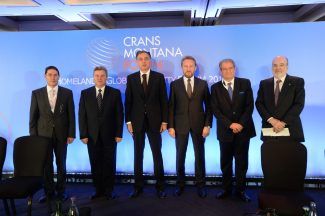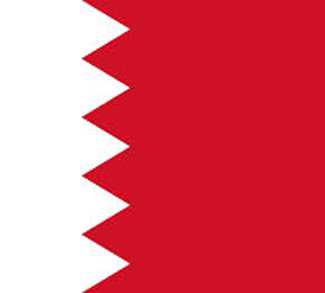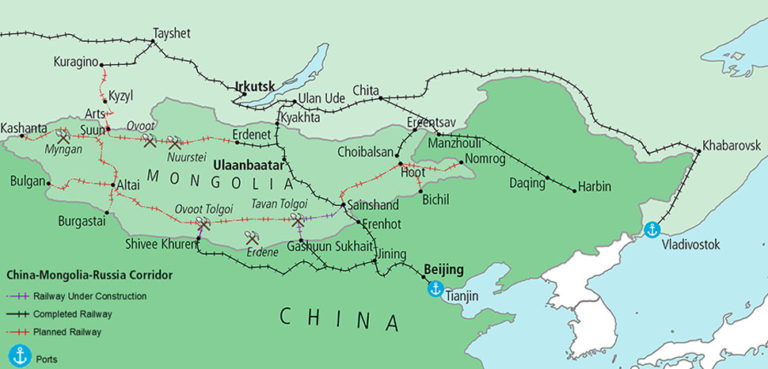The Libyan Investment Authority (LIA), Africa’s largest sovereign wealth fund (SWF), is expecting the United Nations (UN) to unfreeze its $70 billion in assets by year-end. Following a series of transformations undertaken by LIA and years of negotiating with the UN Security Council, the asset freeze lift would enable the fund to make new investments and relocate capital from negative interest rate accounts.
A 2020 Deloitte audit revealed that LIA suffered a $4.1 billion loss in potential returns on its equity portfolio since the onset of the freeze in 2011. Beginning in 2019, the LIA has pursued a substantial transformation program that would see the fund compete with peer-group SWFs in the Middle East region. This program has included building capacity, increasing transparency, and working with the UN on lifting the asset freeze. With the LIA’s four-step transformation program in hand, the UNSC passed Resolution 2701 in October 2023, agreeing to consider changes to the asset freeze, and has been processing LIA’s March 2024 investment plan over the past few months. The investment plan lays out the short-term reallocations and strategies LIA wants to pursue with a lifted freeze, including recovering losses.
Background
Founded in 2006 by Muammar Gaddafi, the LIA has been plagued by corruption from day one. While it was—and still is—mandated to save Libya’s oil-derived wealth for future generations, in reality, the fund was mismanaged and well-known for its vanity projects and money laundering. The patronage systems implemented during the Gaddafi era and his son’s rivalry over the LIA’s control meant that fund managers were unable to report losses if they occurred. The Gaddafi-era combination of corruption and poor asset management also led LIA to a baroque structure of five main subsidiary investment entities and around 550 subsidiary companies.
Soon after Gaddafi’s fall, the LIA fell into utter disarray—LIA’s leadership split between the UN-recognized Western government in Tripoli and the Benghazi-based Eastern government of Khalifa Haftar’s Libyan National Army (LNA). The LIA’s Maltese subsidiaries started operating independently, causing further confusion over where the fund’s $70 billion resided. Under this structure, the UN’s asset freeze had scant success in protecting all $70 billion from corruption and political mismanagement in the post-Gaddafi era. Indeed, the freeze’s application was often uneven, and the complex nature of the LIA meant that some subsidiaries faced the brunt of the freeze over others.
This incongruous division of leadership continued until 2020, when a British court ruled on the leadership of CEO Ali Mahmoud Hassan Mohamed and ensured all subsidiaries and stakeholders accepted his legitimate authority. Notably, Mohamed was affiliated with the Tripoli-based Government of National Accord, while competing political groups backed other high-ranking LIA members claiming to be CEO.
The LIA’s leadership contest replicates the larger political dynamics within Libya since the end of Gaddafi’s rule: a fragmented country based mainly on two divided factions.
In 2021, the interim Government of National Unity (GNU) was formed to unify the GNA and LNA. While the UN-backed efforts have largely prevented further large-scale military conflict, the GNU is by no means stable, and elections have been postponed indefinitely. Abdul Hamid Muhammad Abdul Rahman al-Dbeibeh, the acting GNU prime minister, has pushed Libyan state resources towards economic prosperity, including restoring public services and spearheading domestic investment projects, rather than ensuring political unity, a move likely due to his business background, which includes running the Libyan Investment and Development Holding Company and remaining close with LIA executives.
Libya’s current period of relative political stability has allowed the Authority to pursue greater international recognition to achieve the asset freeze lift. However, the primary risk to ensuring a freeze lift is Russia’s veto power in the UNSC: with Russia’s historic support for Haftar and the LNA, it remains unclear how dedicated Moscow may be toward pursuing its own political and military goals in Libya, potentially destabilizing LIA’s future.
The UNSC Proposal
The LIA’s ongoing issues surrounding legitimacy and stability are further complicated by an extreme devaluation of their holdings—a 2012 audit revealed that around 40% of the Authority’s 550 subsidiaries were not profitable and needed to be sold off. Twelve years later, it is likely that many more remain unprofitable, adding to the growing need for a thorough asset restructuring at the Authority. Furthermore, the inability for the asset freeze to be applied uniformly has created space for new deals to be struck since 2011, many of which are unreported in audits and surveys of LIA’s assets, hampering regulatory attempts at estimating the full portfolio of LIA’s holdings.
The LIA’s transformation plan took off in 2019. Since then, the CEO and executive team have ensured LIA submits yearly reports to the International Forum of Sovereign Wealth Funds (IFSWFs), the leader in SWF transparency and governance reporting in line with the 24 Santiago Principles. These efforts have improved LIA’s transparency significantly—GlobalSWF ranks the LIA 51 out of 100 SWFs in sustainability and governance for 2024; in comparison, the LIA ranked 98 in 2020.
This institutional turnaround has strengthened the LIA’s position within the UNSC to ask for a freeze lift. While the investment proposal submitted to the UNSC in March 2024 only lays out a short-term plan, the LIA maintains a long-term strategy that will be enacted once it has access to frozen assets.
While the LIA’s submission to the UNSC remains classified, the fund’s 2021-2023 strategy document sheds light on its future aspirations. The first step in its strategy tackles three issue areas: enhancing confidence, building capacity, and developing better investments. While the first two areas have largely been completed since 2020 with internal reforms, the third area has yet to be fully realized, in part due to the asset freeze. The LIA estimates that other peer-group SWFs, mainly in the Middle East region, generate yearly 6-7% returns, and the Authority aims to reach that benchmark after the freeze is lifted. Their plan includes reallocating underperforming assets, bringing in external managers to create a smart sanctions compliance regime that maintains some level of international oversight and sanctions pressure, unifying how assets and portfolios are classified across all subsidiaries, and creating an internal investment committee. The initial reallocation is set to draw mainly from non-performing cash assets impacted by the asset freeze and other sanctions; all other assets, based on LIA documents, will likely remain frozen.
Should the first pillar of LIA’s transformation program be complete with the freeze lift, the LIA will then move to pillars two and three: two investment plans, one covering the LIA’s equity portfolio and one on domestic investment. Under these plans, the LIA will likely rely heavily on foreign asset managers, auditors, and custodians, causing a potential for domestic political tension over perceived selling out to foreign experts.
Despite the intricacy of the LIA’s goals to become a fully functioning SWF, there remain three key positions the LIA could adopt: a first-mover in economic diversification, a more active role in domestic development, and a beacon for domestic political stability. These positions have yet to be publicized internally and externally to the fund, indicating the potential for the LIA to grow beyond that of an insular SWF within a fragmented Libya. Looking at the behaviors and strategies of other Middle Eastern SWFs can provide further insight into potential strategies for LIA to adopt going forward. These include:
1. Increased FDI & Economic Diversification
Libya’s economy remains highly reliant on hydrocarbons. Government revenues from oil remain the largest financial flow in Libya, and the UN estimates hydrocarbons make up more than half of Libya’s GDP and around 95% of all Libyan exports. As of 2021, Libya had 48 billion barrels in proven oil reserves, or around 40% of Africa’s total oil reserves, and ranked 9th in the world for largest reserves. With scant domestic consumption—around 200,000 barrels daily—Libya is unlike other oil-rich rentier states that struggle with dwindling oil reserves. Due to international sanctions and the fractured government, Libyan oil production, too, is quite small, exporting around one million barrels per day since 2020.
However, Libya’s historical antagonism towards foreign direct investment (FDI) has made the reopening of the Libyan hydrocarbon market quite challenging. More than 90% of Libya’s deposits are held in five state banks, and private sector financial penetration remains next to none. A history of investor-state disputes in the oil sector makes investors skittish. Oil fields are equally distributed throughout the country, meaning that ongoing disputes between political factions make centralized oil governance demanding.
Despite this, the LIA has numerous opportunities to wield its existing international energy portfolio to act as a magnet for FDI into Libyan energy. In reshuffling non-performing assets, the LIA should consider maximizing existing relationships with Western energy firms and producers while encouraging horizontal personnel and policy spillovers to other government agencies to entice investor-friendly conditions. In January 2024, the LIA signed a strategic partnership deal with British Petroleum (BP) to expand land and sea exploration with Libya’s National Oil Corporation. However, issues almost immediately arose—Oil Minister Mohamed Oun opposed the deal, saying the contract terms are too generous for BP and other foreign parties, a line out of Libya’s antiquated anti-FDI policies.
The LIA should also be a first-mover in efforts to diversify the Libyan economy away from hydrocarbons. While Libya’s immense oil reserves—coupled with a small population and limited consumption—mean that Libya’s oil will last for generations, it remains paramount for the LIA to plan for a world increasingly departing from hydrocarbon reliance. While the BP deal included some provisions for exploratory ways to reduce emissions, and the LIA has been targeting domestic investments in solar power, Libya lags behind other rentier states in terms of diversification. For example, peer-group SWFs in the GCC have long wielded capital toward exploring alternative energy sources. Saudi Arabia, with similarly massive oil reserves, has been investing heavily in its SWF—the Public Investment Fund—to pursue diversification in line with its Vision 2030 strategy.
While diversification is unlikely to be high on the LIA’s current priorities, observing regional SWFs and creating a strategy in response to a world moving away from hydrocarbons is paramount to the LIA’s longstanding survival. The LIA should focus on sustainability policies in the long term while committing to opening the Libyan market in the short term for immediate investment into oil projects. Once foreign capital reaches the Libyan market and development across the country begins, the LIA should begin pivoting toward greater sustainability.
2. Encouraging Domestic Development
The LIA’s international orientation should become equally balanced with pressing domestic needs for post-conflict reconstruction. While domestic development is not explicitly in the LIA mandate, as an institution with significant capital holdings, the LIA can pursue policies to support other government efforts at redevelopment.
The LIA’s domestic plan, to be proposed after the UNSC approves the first investment pillar, should mimic neighboring SWF activity during times of crisis. For example, the Qatar Investment Authority reshored and reallocated significant capital during the initial months of the 2017 diplomatic crisis to ensure domestic self-sufficiency and insulate from macroeconomic risks. With a potential unfreezing of assets, a reshoring of capital may be necessary to ensure the long-term stability of Libya’s political and financial institutions.
With the GNU establishing five geographically-focused reconstruction funds since 2018, all aimed at rebuilding infrastructure and enhancing public service, the LIA has the opportunity to funnel capital into development projects. While the five funds are operated jointly by the prime minister and the Ministry of Planning, the LIA’s aspirationally strong international reach may benefit a GNU looking to cement itself as a viable long-term solution to Libya’s ongoing fragmentation. The LIA’s subsidiary, the Libyan Local Investment and Development Fund (LLIDF), received around $2 billion in 2020; this momentum should continue once the asset freeze is lifted, ensuring future LIA revenue is partially dedicated to local investment. The LIA has been in discussions with Libyan Railroads on bolstering public transportation throughout the country, another sign of LIA’s potential ability to spearhead reconciliation through investments and economic prosperity.
3. Building Political Stability
Given Libya’s ongoing political crises, the LIA can become an example of how to structure and operate local institutions. The intrusion of British law into the CEO appointment, for example, indicates the present need for foreign confirmation to ensure domestic legitimacy.
Should the LIA continue strengthening its internal governance and receive further accolades from international institutions, other Libyan political institutions represented by the interim GNU may be able to learn from organizational spillovers. For example, the catastrophic Derna floods of September 2023 could have been better managed had the split governments communicated effectively and had institutional measures in place for greater accountability and responsibility.
With the current interim prime minister al-Dbeibeh focusing significantly on economic reform, it is possible that the LIA may receive the most state resources in hopes of opening the Libyan market to foreign investors. This has already been noticed in international settings, with the LIA holding a strong presence, for example, during sideline meetings with the Multilateral Investment Guarantee Agency (MIGA) and during World Bank and IMF meetings. Libya’s fragile political system may benefit significantly by adapting the LIA’s five-year strong transformation plan when building out other interim government agencies.
However, international support for the GNU’s rivals threatens national unity and the LIA. Most notable of these is Russia’s support for the Eastern government – even if Libya is unlikely at the top of Moscow’s current list of priorities. Another risk for political stability includes competition over Libyan territorial control, a recurrent issue given the hold the Government of National Security (GNS) has over eastern Libya. Given the GNU’s tilt towards economic prosperity and the lack of an institutional investor in the GNS, the beneficiaries of LIA’s wealth must also be tightly scrutinized. An LIA asset freeze lift may end up only benefiting those under the GNU’s control in western Libya, yet another factor that risks cementing Libya’s extant fragmentation.
The worst case in Libya would see a resumption of military conflict between the two major governments, with foreign support and continued fracturing along political and ideological lines. The continued presence of ISIS-Libya and other Islamist groups, as well as soldiers from Russia’s Wagner Group—now called Africa Corps—means the mobilization of smaller armed groups is possible. Severe exploitation, amounting to what many have called Libya’s slave trade, will face further entrenchment with the resumption of military activities. While it is beyond the LIA’s reasonable expectation to address all facets of Libyan stability and security, the institution’s elevation to a cornerstone of Libyan post-conflict reconstruction is telling: the financial and bureaucratic support given to the LIA should be maximized to create an institution insulated from the risk of country-wide deterioration. However, this insulation can only come about with an intentional domestic turn at the LIA to support government initiatives to build capacity at a financial and economic level throughout the country. A positive UNSC lift of the asset freeze would thus give Libya yet another international affirmation of its attempts at cementing long-term cohesion.
Conclusion
The LIA is facing a significant period of reckoning as it attempts to become a legitimate player in the international world of sovereign wealth. The UN asset freeze lift is one of the first decisions needed for Libya’s financial ecosystem to rebirth from the past decade of political and military conflict.
The global sanctions regime imposed on Libya must be altered and closely monitored for this to come to fruition. If the LIA were to position itself as a government vehicle primed for horizontal spillovers and capacity building throughout Libya—not just in GNU-controlled jurisdictions—then ongoing sanctions, asset freezes, and embargos would need to be flexible. The major resulting issue, therefore, is whether key actors in global sanctions—the United States, European Union, and the UN—will be willing to alter their stance on Libyan finance. Given the domestic instability endemic to post-2011 Libya, it is likely that many international players, particularly those reliant on Libyan oil exports, would remain skeptical of the possibility of a GNU with more flexibility and policy space to govern critical aspects of the Libyan economy.
Despite international concern and scrutiny, the LIA continues to deal with foreign multinational firms and is bent on establishing a new identity for an institution born into corruption and scandal. While the risks are plentiful going forward, the opportunities and rewards may be exponentially greater.




